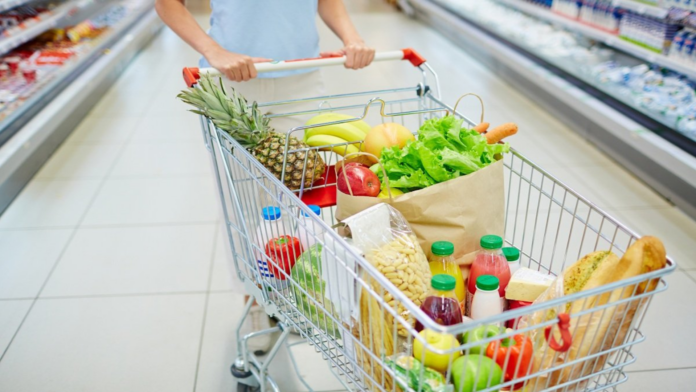Organised F&G retailer revenue to grow in mid-teens next fiscal
Competition from quick commerce to continue; strong balance sheets to keep credit profiles stable
Continued healthy demand and expansion in underpenetrated Tier II and III cities will help organised brick-and-mortar food and grocery (F&G) retailers log a strong revenue growth of 14-15% in fiscal 2025 despite fierce competition from quick commerce1 channels. This translates to three years of strong growth on the trot — after ~30% last fiscal and an expected 15% in the current one.
However, modest demand from the discretionary segment — comprising general merchandise (crockery, home appliances and utensils) and apparel — owing to inflationary pressures will keep the sector’s operating margin rangebound at 6.0-6.5% in the current and next fiscals (6.9% last fiscal). For the record, food and non-food grocery contributes 75-77% of revenue for F&G retailers, while the balance is contributed by the discretionary products sold at F&G outlets. Besides, the discretionary segment offers relatively higher margins to F&G retailers.
Capital expenditure (capex) spend in the segment shall remain healthy. However, strong cash flows and steady working capital cycle will limit the players’ dependence on external debt, ensuring strong balance sheets and stable credit profiles.
A CRISIL Ratings analysis of six players that accounted for a fourth of the ~Rs 2.4 lakh crore organised F&G market last fiscal indicates as much.
Says Poonam Upadhyay, Director, CRISIL Ratings, “Healthy demand outlook and low organised penetration2 will ensure mid-teens revenue growth for F&G retailers this fiscal and the next. We expect area addition of CRISIL Ratings-rated players to increase ~20% cumulatively over fiscals 2024 and 2025 on a high base following a substantial increase of ~40% in fiscals 2022 and 2023. Incumbent retailers are also expanding into omnichannel platform – includes brick-and-mortar stores and online formats – to compete with quick commerce players. But then, they will ensure calibrated investments to restrict cash burn in the online format.”
Even as the pace of increase in area under operations normalises, the sector’s revenue density (revenue per square foot, or sq ft) is expected at ~Rs 33,600 next fiscal, remaining ~10% lower than the pre-pandemic peak (see chart in annexure). This is primarily owing to slower-than-expected ramp-up of store openings in the past two fiscals, especially in metros/ Tier I cities, due to increasing competition from the quick commerce segment.
Though quick commerce is expected to log a robust growth of ~30% in the medium term, its share in the F&G segment will remain at around 9-11% with the brick-and-mortar format dominating. Nonetheless, organised brick-and mortar retailers are investing in omnichannel offerings to enhance customer convenience owing to growing popularity of quick commerce.
Demand from the discretionary segment is expected to remain modest because of prevailing inflationary pressures; its share has moderated to 22-23% from ~29% prior to the pandemic. With the contribution from this segment likely remaining subdued in fiscal 2025, it shall affect the F&G retailers’ gross margins. However, benefits of operating leverage stemming from the increase in revenues shall help offset the impact and keep operating profitability in the 6.0-6.5% range in the current and next fiscals.
Says Shounak Chakravarty, Associate Director, CRISIL Ratings, “Strong cash flows and well-managed working capital will obviate any need for material debt raising, leading to continued healthy balance sheets for CRISIL Ratings-rated F&G players. Capex spend is estimated at ~Rs 5,500 crore over fiscals 2024 and 2025 compared with Rs 6,000 crore over fiscals 2022 and 2023 towards online expansion, addition and refurbishment of stores. Ergo, key debt protection metrics, i.e., interest cover and total debt/Ebitda (earnings before interest, taxes, depreciation and amortisation) will remain healthy in line with previous fiscal’s level of ~13 times and ~0.40 times, respectively.”
That said, demand momentum from the discretionary segment, slower-than-expected ramp-up of newer stores and competition from the unorganised and quick commerce segments will be key monitorables.
1 App-based players without a B&M set-up and providing deliveries in under one hour
2 Penetration of organised retailers is ~5% of the overall F&G segment

